- Choosing the Right Tomato Varieties
- 1. Climate
- 2. Flavor
- 3. Use
- 4. Disease Resistance
- Factors to Consider for Friendly Tomato Sprouts
- 1. Soil
- 2. Temperature
- 3. Light
- 4. Watering
- 5. Air Circulation
- 6. Fertilization
- 7. Transplantation
- Preparing the Soil for Sowing Tomato Seeds
- Tips for Creating the Ideal Growing Medium
- Sowing Tomato Seeds
- 1. Choosing the Right Seeds
- 2. Preparing the Seed Trays
- 3. Sowing the Seeds
- 4. Providing Optimal Growing Conditions
- 5. Watering and Care
- 6. Transplanting Seedlings
- 7. Hardening Off and Planting
- Step-by-Step Guide to Successful Sowing
- Providing Proper Watering and Sunlight
- Watering:
- Sunlight:
- Best Practices for Tomato Sprout Development
- 1. Sow the seeds in high-quality soil:
- 2. Provide adequate sunlight:
- 3. Water consistently:
- 4. Maintain proper temperature and humidity:
- 5. Transplant at the right time:
- 6. Provide support for vertical growth:
- 7. Fertilize appropriately:
- 8. Monitor for pests and diseases:
- Protecting Tomato Sprouts from Pests and Diseases
- 1. Mulching
- 2. Proper spacing
- 3. Regular watering
- 4. Tomato cages or stakes
- 5. Regular inspection and removal of pests
- 6. Crop rotation
- 7. Disease-resistant varieties
- Conclusion
- Preventive Measures and Treatment Options
- Preventive Measures
- Treatment Options
- “Question-Answer”
- What are some good medium-growing tomato varieties to grow?
- How should I sow tomato seeds for friendly tomato sprouts?
- What are some tips for caring for tomato seedlings?
- Are there any specific temperature requirements for sowing tomato seeds?
- How long does it take for tomato seeds to germinate?
- “Video” Ideas | Growing sprouts at home | No need for land, fast to harvest
Tomatoes are a popular and versatile fruit that can be grown in many different climates and regions. Whether you are a seasoned gardener or just starting out, growing your own tomatoes can be a rewarding and delicious experience. One of the key steps in growing your own tomatoes is starting with healthy and friendly tomato sprouts. In this article, we will explore some tips and tricks for successfully sowing tomato seeds and growing 4 excellent medium-growing varieties.
Before sowing tomato seeds, it is important to choose the right variety for your growing conditions. There are countless tomato varieties available, each with its own unique characteristics and requirements. For beginners, it is recommended to start with medium-growing varieties that are well-suited for a wide range of growing conditions. Some excellent choices include ‘Celebrity’, ‘Roma’, ‘Early Girl’, and ‘Better Boy’.
Once you have chosen the right variety, it is time to sow the tomato seeds. Tomato seeds can be started indoors, in a greenhouse, or directly in the garden, depending on your climate and growing season. To sow tomato seeds, fill a seed tray or small pots with a well-draining potting mix. Moisten the soil and then sow the seeds in rows, spacing them about 1/4 inch apart. Lightly cover the seeds with a thin layer of soil and gently press down to ensure good soil-to-seed contact.
After sowing the tomato seeds, it is important to provide proper care and attention to promote healthy sprouting. Place the seed tray or pots in a warm and well-lit area, preferably near a sunny window or under grow lights. Keep the soil consistently moist but not waterlogged by gently misting or using a bottom-watering method. Within 7-14 days, you should start to see the friendly tomato sprouts emerge.
Remember to label your tomato sprouts to ensure you can keep track of the different varieties. This will be especially helpful when it comes time to transplant them into the garden or larger containers. By following these steps and selecting the right varieties, you can get friendly tomato sprouts that will grow into healthy and productive tomato plants.
Choosing the Right Tomato Varieties
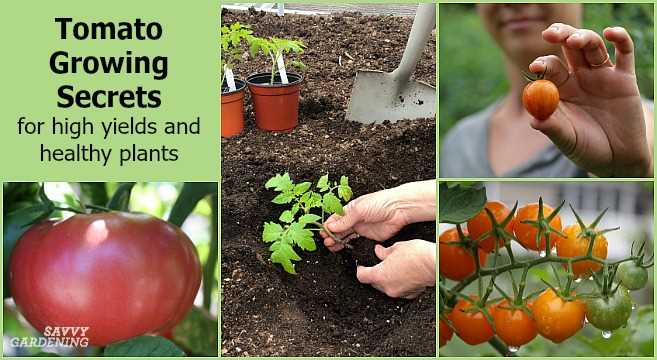
When it comes to growing tomatoes, choosing the right variety is key to a successful harvest. With so many different types of tomatoes available, it can be overwhelming to decide which ones to plant in your garden. Here are some factors to consider when choosing tomato varieties:
1. Climate
Tomatoes are classified into two main categories based on their growth habit: determinate and indeterminate. Determinate tomatoes are more compact and tend to stop growing after reaching a certain height. They are better suited for areas with shorter growing seasons or limited garden space. Indeterminate tomatoes, on the other hand, keep growing and producing fruit until they are killed by frost. They are a good choice for regions with longer growing seasons.
2. Flavor
The flavor of tomatoes can vary greatly depending on the variety. Some tomatoes are known for their sweet and juicy taste, while others have a more tangy or acidic flavor. Consider your personal preference and what you plan to use the tomatoes for when choosing a variety.
3. Use
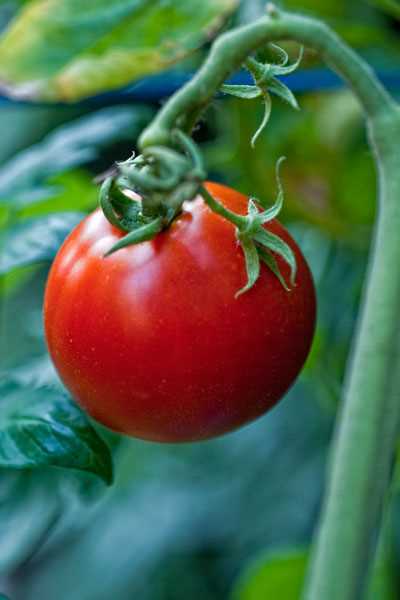
Some tomatoes are better suited for fresh eating, while others are ideal for canning, sauces, or salads. Determining how you plan to use the tomatoes can help guide your variety selection. For example, if you want tomatoes for making sauces, look for varieties that have a meaty texture and less juice.
4. Disease Resistance
Tomatoes are susceptible to various diseases, such as blight, wilt, and leaf spots. To minimize the risk of disease and ensure a healthy crop, consider choosing tomato varieties that are resistant to common tomato diseases in your area. Look for information on disease resistance when purchasing tomato seeds or seedlings.
Remember to also consider the size and color of the tomatoes, as well as the overall plant size and growth habit. Some tomatoes are known for their large size, while others produce small cherry tomatoes. Additionally, some tomato plants require staking or support, while others can be left to sprawl on the ground.
By considering these factors and doing some research, you can choose the right tomato varieties that will thrive in your garden and provide you with a bountiful harvest.
Factors to Consider for Friendly Tomato Sprouts
Growing tomato sprouts requires careful consideration of several important factors. By understanding and addressing these factors, you can create an optimal environment for your tomato seeds to germinate and grow into healthy plants. Here are some factors to consider:
1. Soil
Choose a well-draining soil mix that is rich in organic matter. This will provide the necessary nutrients and moisture retention for tomato seeds to germinate and develop. Avoid heavy clay soils that can become compacted and inhibit root growth.
2. Temperature
Tomato seeds germinate best in warm temperatures between 70-85°F (21-29°C). Ensure that your growing area or seed trays are kept in a warm location to encourage germination. Using heat mats or a warm room can help maintain the desired temperature.
3. Light
Tomato sprouts require ample light to grow into strong and healthy plants. Place your seed trays or pots in a sunny spot or provide supplemental lighting using grow lights. Aim for 14-16 hours of light per day for optimal growth.
4. Watering
Proper watering is crucial for tomato sprout growth. Keep the soil consistently moist but not waterlogged. Overwatering can lead to root rot, while underwatering can cause stunted growth. Water the soil gently to avoid dislodging or damaging the delicate seedlings.
5. Air Circulation
Good air circulation is important to prevent the development of fungal diseases and to strengthen the young tomato plants. Avoid overcrowding seedlings and ensure there is enough space between trays or pots for air to circulate.
6. Fertilization
Start fertilizing tomato sprouts with a balanced organic fertilizer once they have developed their first true leaves. Follow the recommended dosage instructions on the fertilizer packaging to ensure healthy growth.
7. Transplantation
When tomato sprouts have reached a certain size and strength, they can be transplanted into larger containers or into the garden. Transplant them carefully, being cautious not to damage the delicate roots. Ensure the new planting location has sufficient sunlight, good drainage, and adequate space for the mature plants.
By considering these factors and providing a nurturing environment, you can help your tomato sprouts thrive and grow into vigorous plants that will reward you with a bountiful harvest.
Preparing the Soil for Sowing Tomato Seeds
Before sowing tomato seeds, it’s important to prepare the soil to provide the best growing conditions for the sprouts. Follow these steps to ensure your tomato plants have a strong start:
- Choose a sunny location: Tomatoes need at least 6-8 hours of direct sunlight each day. Select a spot in your garden that receives ample sunlight.
- Clear debris and weeds: Remove any weeds, rocks, or debris from the chosen spot. Weeds can compete with tomato plants for nutrients and water, so it’s important to have a clear area for sowing seeds.
- Loosen the soil: Use a garden fork or tiller to loosen the soil to a depth of about 8-10 inches. This will improve soil drainage and allow roots to penetrate easily.
- Amend the soil: Tomatoes prefer well-draining, nutrient-rich soil. Add compost or well-rotted manure to the soil to improve its fertility and structure. Work the amendments into the top 6 inches of soil.
- Test the soil pH: Tomatoes thrive in slightly acidic soil with a pH level between 6.0 and 6.8. Test the soil pH using a home pH testing kit and adjust it if necessary. Add lime to raise the pH or sulfur to lower it.
- Apply organic fertilizer: Prior to sowing the seeds, apply a balanced, organic fertilizer to provide essential nutrients. Follow the recommended dosage on the fertilizer package.
- Water the soil: Before sowing, thoroughly water the soil to ensure it’s evenly moist. This will create an ideal environment for the tomato seeds to germinate.
By properly preparing the soil before sowing tomato seeds, you’ll provide the sprouts with a healthy and nutrient-rich foundation for growth. This will increase the chances of successful germination and lead to vigorous tomato plants.
Tips for Creating the Ideal Growing Medium
Creating the right growing medium for your tomato sprouts is crucial for their healthy growth and development. Here are some tips to help you create the ideal growing medium:
- Choose the right potting mix: Use a high-quality potting mix specifically formulated for growing tomatoes. Avoid using garden soil, as it may contain pests, diseases, and weed seeds.
- Add organic matter: Mix in compost or well-rotted manure to improve the soil structure and provide essential nutrients. Organic matter also helps retain moisture and improves drainage.
- Ensure good drainage: Tomato plants dislike soggy soil, so make sure your container has drainage holes and use a well-draining mix. Excess water can lead to root rot and other diseases.
- Provide adequate aeration: Incorporate perlite or vermiculite into the growing medium to improve aeration. This will help the roots to breathe and prevent waterlogging.
- Optimize pH levels: Tomato plants prefer slightly acidic to neutral soil with a pH range of 6.0 to 7.0. Test the pH of your growing medium and adjust if necessary using lime or sulfur.
- Balance nutrients: Ensure your growing medium has a balanced mix of essential nutrients like nitrogen, phosphorus, and potassium. Use a slow-release fertilizer or supplement with organic fertilizers.
- Consider using biochar: Biochar is a highly porous charcoal-like substance that improves soil fertility and water retention. It also helps retain nutrients and provides a favorable environment for beneficial microorganisms.
By following these tips and creating the ideal growing medium, you’ll give your tomato sprouts the best chance of thriving and producing a bountiful harvest. Remember to regularly monitor the moisture levels, provide adequate sunlight, and take good care of your tomato plants throughout their growth journey.
Sowing Tomato Seeds
When it comes to sowing tomato seeds, it’s important to follow a few key steps to ensure successful germination and healthy seedlings. Here’s a guide on how to sow tomato seeds:
1. Choosing the Right Seeds
Start by selecting tomato seeds that are suited for your growing conditions and preferences. Consider factors such as taste, size, color, and disease resistance. You can find a wide variety of tomato seeds available in seed catalogs or online.
2. Preparing the Seed Trays
Use clean seed trays or pots with drainage holes to sow the tomato seeds. Fill the trays with a well-draining seed starting mix, which can be a combination of peat moss, vermiculite, and perlite.
3. Sowing the Seeds
Make small holes in the seed starting mix, about 1/4 inch deep and spaced 2 inches apart. Place one or two seeds in each hole and cover them lightly with the mix. Water the trays gently to ensure the seeds are moist but not soaked.
4. Providing Optimal Growing Conditions
Place the trays in a warm location with a temperature between 70-80°F (21-27°C). Provide the seedlings with 12-14 hours of light each day, either by placing them near a south-facing window or using fluorescent grow lights.
5. Watering and Care
Keep the seed starting mix moist but not waterlogged. Water the trays from the bottom by placing them in a shallow container filled with water and allowing the mix to soak up the moisture. This helps prevent damping-off disease.
6. Transplanting Seedlings
Once the tomato seedlings have developed their first true leaves and are about 2-3 inches tall, it’s time to transplant them into individual pots or containers. Handle the seedlings carefully to avoid damaging the roots.
7. Hardening Off and Planting
Before planting the tomato seedlings in the garden, they need to be hardened off. Gradually expose them to outdoor conditions by placing them outside during the day and bringing them indoors at night. After a week or so, the seedlings will be ready to be planted in the garden.
Following these steps will help you sow your tomato seeds successfully and get healthy seedlings that will grow into productive tomato plants. Happy sowing!
Step-by-Step Guide to Successful Sowing
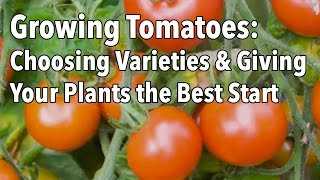
Follow these simple steps to ensure successful sowing and germination of your tomato seeds:
- Prepare the soil: Choose a well-draining location in your garden with full sun exposure. Loosen the soil using a garden fork or tiller to a depth of at least 6 inches.
- Add compost: Incorporate well-rotted compost or organic matter into the soil to improve its fertility and drainage.
- Plan the planting date: Determine the ideal planting date for your tomato variety based on your climate. Consult a local gardening guide or your agricultural extension office for specific recommendations.
- Sow the seeds indoors: Start your tomato seeds indoors 4-6 weeks before the last expected frost date. Fill seed trays with a seed-starting mix and sow 2-3 seeds in each cell. Keep the soil consistently moist, but not waterlogged.
- Provide warmth and light: Place the seed trays in a warm location with temperatures around 70-75°F (21-24°C). Provide supplemental light using fluorescent or grow lights if natural light is limited.
- Thin out seedlings: Once the seedlings have developed their first true leaves, thin them out by removing the weaker ones, leaving only the strongest seedling in each cell.
- Harden off seedlings: About 7-10 days before transplanting, gradually acclimate the seedlings to outdoor conditions by exposing them to increasing amounts of sunlight and outdoor temperatures.
- Prepare the planting holes: Dig holes in the prepared garden soil that are slightly deeper and wider than the root ball of the seedlings.
- Transplant the seedlings: Gently remove the seedlings from the seed trays and place them in the prepared holes. Backfill the soil around the seedlings, firming it gently.
- Water and mulch: Water the newly transplanted seedlings thoroughly, ensuring that the soil is evenly moist. Apply a layer of organic mulch around the plants to conserve moisture and suppress weed growth.
- Provide support: Depending on the tomato variety, install stakes, cages, or trellises to support the plants as they grow.
- Maintain proper care: Water the tomato plants regularly, keeping the soil evenly moist but not waterlogged. Fertilize the plants with a balanced organic fertilizer according to package instructions. Monitor for pests and diseases and take appropriate action if necessary.
- Harvest and enjoy: Once the tomatoes ripen, harvest them and enjoy the fruits of your labor!
Providing Proper Watering and Sunlight
Proper watering and sunlight are crucial for the healthy growth of tomato sprouts. Here are some tips to ensure your tomato sprouts get the right amount of water and sunlight:
Watering:
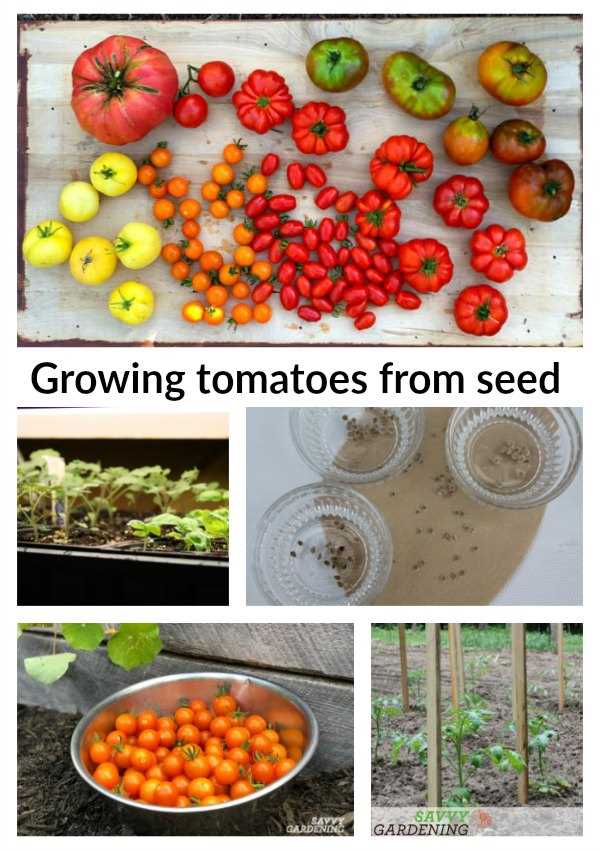
- Water the tomato sprouts regularly to keep the soil moist, but not soggy.
- Do not overwater as it can lead to root rot and other fungal diseases. A good way to check if the soil needs watering is by sticking your finger about an inch into the soil; if it feels dry at that depth, it’s time to water.
- Water the plants at the base, directly onto the soil, rather than overhead. This helps avoid wetting the leaves, which can increase the risk of fungal diseases.
- Use a watering can or a hose with a gentle spray nozzle to provide a controlled flow of water.
- Consider using a mulch around the plants to help retain moisture in the soil and reduce evaporation.
Sunlight:
- Tomato sprouts need at least 6-8 hours of direct sunlight daily to thrive.
- Choose a sunny spot in your garden or balcony where the tomato plants can receive ample sunlight.
- If you are growing tomatoes indoors, place them near a south-facing window or use grow lights to provide sufficient light.
- Rotate the pots or containers regularly to ensure all sides of the plants receive equal sunlight.
- Monitor the temperature and humidity levels to create an optimal environment for tomato sprout growth.
By providing proper watering and sunlight, you can ensure the success of your tomato sprouts. Remember to monitor the soil moisture, adjust watering accordingly, and give your plants enough sunlight to thrive.
Best Practices for Tomato Sprout Development
Growing healthy and strong tomato sprouts requires attention to detail and proper care. By following these best practices, you can improve the success rate of your tomato sprout development:
1. Sow the seeds in high-quality soil:
Choose a well-draining potting mix or seed-starting soil that is rich in organic matter. This will provide the necessary nutrients for the sprouts to thrive.
2. Provide adequate sunlight:
Tomato sprouts need plenty of sunlight to grow properly. Place them in a sunny spot, preferably near a south-facing window or under grow lights. Aim for 10-12 hours of direct sunlight each day.
3. Water consistently:
Keep the soil consistently moist but not waterlogged. Water the sprouts gently from the bottom to avoid disturbing the delicate roots. Avoid overwatering, as it can lead to root rot.
4. Maintain proper temperature and humidity:
Tomato sprouts prefer warm temperatures between 70-80°F (21-27°C) during the day and slightly cooler temperatures at night. Maintain a relative humidity level of around 50-70% to prevent the soil from drying out.
5. Transplant at the right time:
When the tomato sprouts have developed their second set of true leaves, they are ready to be transplanted into larger containers or the garden. Transplant carefully to avoid damaging the roots.
6. Provide support for vertical growth:
Tomato plants tend to grow vertically, so it’s essential to provide support for their stems as they mature. Install stakes, trellises, or cages to prevent the plants from sprawling on the ground and to promote healthy growth.
7. Fertilize appropriately:
Feed the tomato sprouts with a balanced fertilizer once they have established a strong root system. Follow the instructions on the fertilizer packaging for the correct dosage and application frequency.
8. Monitor for pests and diseases:
Regularly inspect the tomato sprouts for any signs of pest infestation or disease. Common pests include aphids, whiteflies, and tomato hornworms. Treat any issues promptly to prevent further damage.
By implementing these best practices, you can ensure the successful development of your tomato sprouts and increase your chances of a bountiful tomato harvest. Remember to stay attentive to their needs and provide them with the necessary care throughout their growth stages.
Protecting Tomato Sprouts from Pests and Diseases
Protecting tomato sprouts from pests and diseases is essential for ensuring a healthy and successful growth. Here are some tips to help you keep your tomato plants safe:
1. Mulching
Mulching around your tomato plants can help prevent pests and diseases. Mulch acts as a barrier, preventing weeds from growing and competing with your tomato plants for nutrients. It also helps to retain moisture in the soil, keeping the roots of the plants healthy.
2. Proper spacing
Proper spacing between tomato plants is crucial to prevent the spread of diseases. When tomato plants are too close together, it creates a humid environment that is favorable for the growth of diseases. Ensure that there is enough space between each plant to allow adequate air circulation.
3. Regular watering
Tomato plants should be watered consistently to prevent stress and vulnerability to diseases. Avoid overhead watering as it can promote the spread of diseases. Instead, water at the base of the plant to keep the leaves dry. Watering in the morning is recommended so that the foliage has time to dry before evening.
4. Tomato cages or stakes
Using tomato cages or stakes can help support the plants and prevent them from touching the ground. When tomato plants come into contact with the soil, it increases the risk of diseases such as blight. Keeping the foliage off the ground also improves air circulation, reducing the likelihood of diseases spreading.
5. Regular inspection and removal of pests
Regularly inspect your tomato plants for signs of pests such as aphids, caterpillars, or whiteflies. If you spot any pests, remove them manually or treat with organic pest control methods. Early detection and intervention can help prevent pests from causing significant damage to your tomato sprouts.
6. Crop rotation
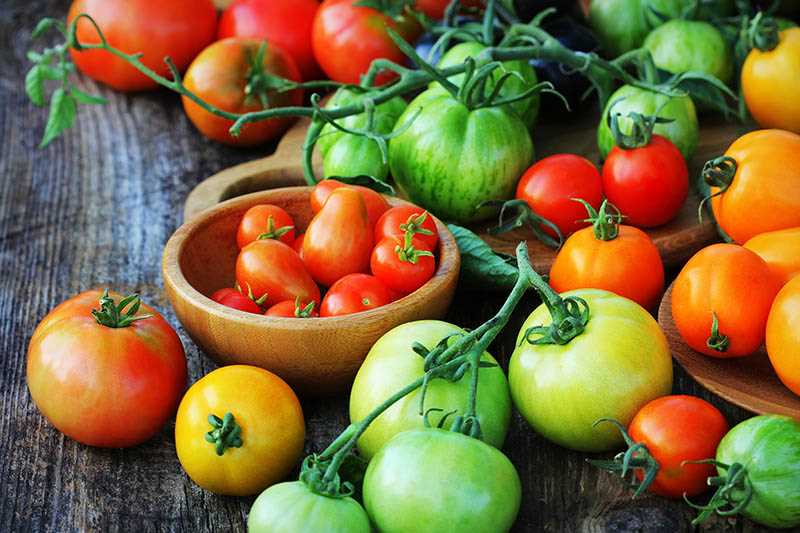
Rotate the location of your tomato plants each year to prevent the buildup of diseases in the soil. Avoid planting tomatoes in the same spot for consecutive years. This practice disrupts the life cycle of pests and diseases, reducing their impact on your plants.
7. Disease-resistant varieties
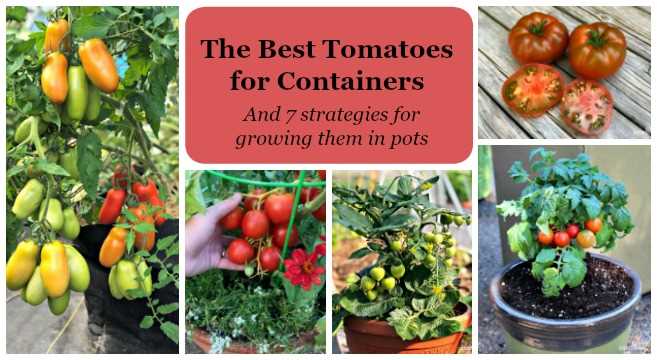
Consider planting disease-resistant tomato varieties. These varieties have been bred to be more resistant to common tomato diseases, such as blight or wilt. Check the seed packets or plant labels for information on disease resistance, and choose varieties that are known to perform well in your area.
Conclusion
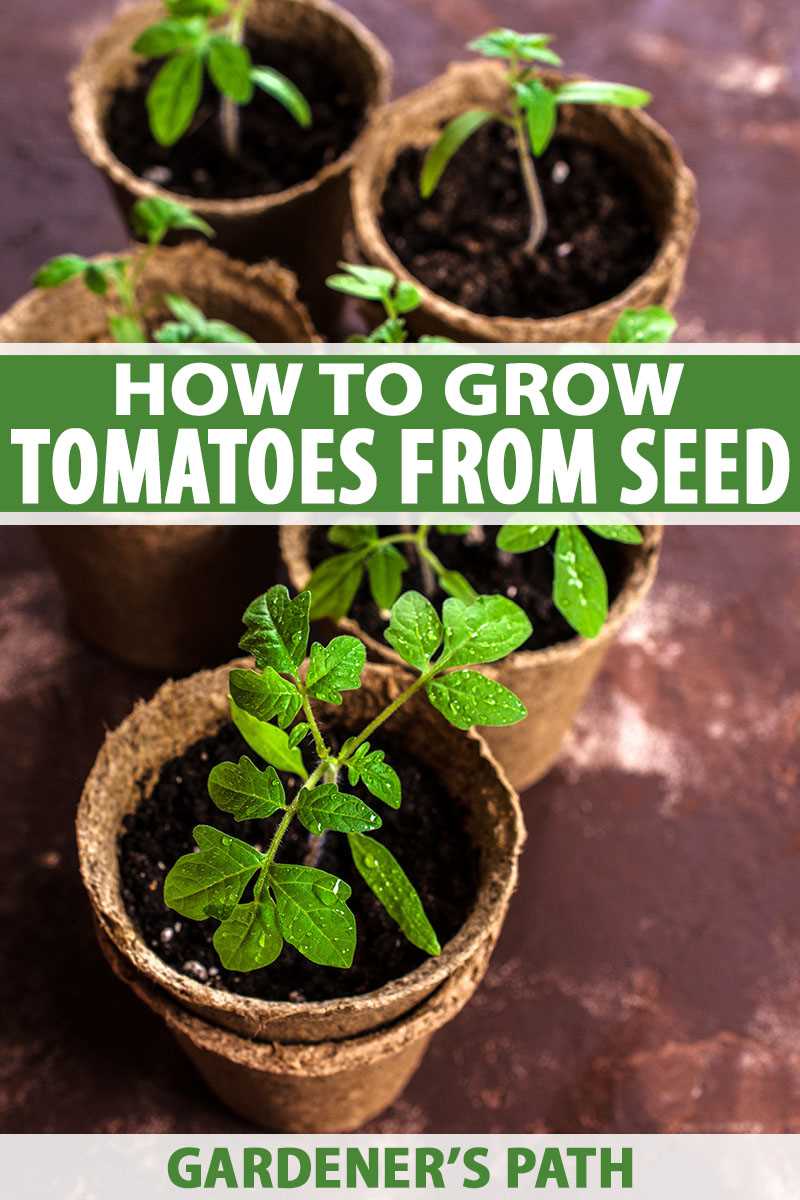
By following these tips, you can protect your tomato sprouts from pests and diseases, ensuring a healthy and abundant harvest. Remember to monitor your plants regularly, provide proper care, and take prompt action against any signs of trouble. Happy gardening!
Preventive Measures and Treatment Options
Preventive Measures
- Choose disease-resistant tomato varieties when selecting seeds or seedlings.
- Rotate tomato crops every year to prevent the buildup of soil-borne diseases.
- Clean garden tools and equipment before and after use to avoid spreading diseases.
- Keep the garden area clean and free from weeds, as they can harbor pests and diseases.
- Avoid overcrowding tomato plants, as good air circulation helps prevent diseases.
- Water tomato plants at the base to prevent wet foliage, which can lead to fungal infections.
- Some gardeners find success in using organic mulch around tomato plants to prevent soil splashing onto lower leaves.
Treatment Options
If your tomato plants do become infected with diseases, it’s important to act quickly to minimize the damage. Here are some treatment options:
- Fungicides: Use fungicides specifically formulated for tomato diseases according to the instructions provided. Make sure to apply them at the first signs of disease and continue as directed.
- Pruning: Remove infected plant parts such as leaves, branches, or fruits, and dispose of them properly away from the garden. This can help prevent the spread of diseases.
- Biological Controls: Consider using beneficial insects, such as ladybugs or lacewings, which feed on pests like aphids or mites that can transmit diseases.
- Hot Water Treatment: If the seeds or seedlings are infected, soaking them in hot water can help kill pathogens. Follow recommended guidelines for temperature and duration.
- Cultural Practices: Proper sanitation and management practices, such as removing infected plants, crop rotation, and good watering practices, can help prevent and control diseases over time.
Remember that prevention is always better than cure when it comes to tomato diseases. By implementing preventive measures and acting promptly to treat any infections, you can increase the chances of having healthy tomato plants and a bountiful harvest.
“Question-Answer”
What are some good medium-growing tomato varieties to grow?
Some good medium-growing tomato varieties to grow include Roma, Celebrity, Early Girl, and Better Boy.
How should I sow tomato seeds for friendly tomato sprouts?
To sow tomato seeds for friendly tomato sprouts, start by filling a seed tray or pots with potting soil. Moisten the soil slightly. Then, press the tomato seeds into the soil, about 1/4 inch deep. Cover the tray or pots with a plastic wrap or a plastic dome to create a greenhouse-like environment. Place the tray or pots in a warm location, where the temperature is around 70-75 degrees Fahrenheit. Keep the soil moist but not soggy. Once the tomato seedlings have sprouted, remove the plastic cover and place them in a location with full sunlight.
What are some tips for caring for tomato seedlings?
Some tips for caring for tomato seedlings include keeping the soil moist but not soggy, providing them with at least 6-8 hours of direct sunlight, and fertilizing them with a balanced tomato fertilizer every 2-3 weeks. It’s also important to provide support for the tomato plants as they grow, such as using a tomato cage or stakes. Monitor the plants for any signs of pests or diseases and take appropriate action if necessary.
Are there any specific temperature requirements for sowing tomato seeds?
Yes, there are specific temperature requirements for sowing tomato seeds. The soil temperature should be around 70-75 degrees Fahrenheit for optimal germination. If the temperature is too cold, the seeds may not germinate properly. You can use a seedling heat mat or place the seed tray or pots in a warm location, such as near a heating vent or on top of a refrigerator, to provide the necessary warmth.
How long does it take for tomato seeds to germinate?
It usually takes tomato seeds about 5-10 days to germinate, depending on the variety and the temperature. Some varieties may germinate faster, while others may take longer. It’s important to be patient and provide the seeds with the right conditions for germination, such as adequate warmth and moisture.







